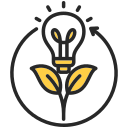
Circular Economy and Recycling Solutions
The transition to a circular economy is reshaping the way industries and individuals approach resource management. Unlike the traditional linear model of production and disposal, circular economy principles focus on creating regenerative systems that keep products, materials, and resources in use for as long as possible. This approach not only minimizes waste but also unlocks new economic opportunities and drives innovation in recycling and sustainable design. As global awareness of environmental challenges rises, the need for effective recycling solutions has become more urgent, positioning circular economy strategies at the forefront of sustainability efforts.
Understanding the Circular Economy
Circularity is rooted in designing out waste and pollution from the outset. Products and processes are conceived with a focus on durability, reparability, and recyclability, ensuring materials are kept in productive cycles rather than destined for landfill. Companies adopting these principles often see enhanced brand loyalty and competitive advantages as consumers become more conscious of environmental impacts. The shift to a truly circular model requires collaboration across supply chains and legislative support that incentivizes responsible resource management.
Transitioning to a circular economy yields notable economic advantages, such as reducing dependency on volatile raw material markets and creating new jobs in sectors like refurbishment and recycling. Environmentally, it mitigates greenhouse gas emissions by minimizing the extraction and processing of virgin materials. The resulting ecosystems support biodiversity and contribute to achieving climate goals. Regions and businesses embracing circular strategies are often recognized as sustainability leaders, strengthening their reputation and stakeholder trust.
Around the world, countries and organizations are pioneering circular strategies tailored to their unique resources and economic structures. Governments play a vital role by enacting policies that encourage closed-loop systems, while companies invest in innovative technologies like advanced recycling and remanufacturing. Consumer awareness is also driving demand for circular products, further accelerating adoption. Successful implementation depends on aligning public and private sector efforts to develop scalable and inclusive solutions.
Advances in Recycling Technologies
Smart Sorting Systems
Emerging smart sorting technologies use artificial intelligence and machine learning to identify and separate materials with exceptional accuracy. Optical sensors, robotic arms, and data analytics streamline the sorting process in recycling facilities, significantly reducing manual labor and contamination rates. This technological evolution enables higher purity levels in recovered materials, which are essential for closed-loop recycling. The widespread adoption of smart sorting marks an important step towards more efficient and scalable recycling systems.
Chemical Recycling Innovations
Chemical recycling processes are gaining traction as they offer a way to break down complex polymers into their basic chemical components. Unlike traditional mechanical recycling, which can degrade material quality, chemical recycling restores materials to near-virgin conditions, making it possible to recycle some products multiple times without significant loss of quality. This approach is particularly promising for hard-to-recycle plastics and composites, presenting new solutions for material recovery challenges faced by many industries.
Textile and E-Waste Recycling
Two of the fastest-growing waste streams—textiles and electronic waste—are receiving focused attention with specialized recycling solutions. Advancements in mechanical and chemical processes allow for the separation and recovery of valuable fibers from clothing and components from electronics. These developments have the potential to capture significant resources that would otherwise be lost. As fashion and technology industries commit to circularity, cutting-edge recycling techniques are essential to managing these complex waste streams responsibly.
Circular Design and Product Lifecycle
01
Designing for Longevity
Creating products that stand the test of time is a cornerstone of circular economy thinking. This involves selecting durable materials, modular components, and timeless aesthetics that resist obsolescence. Companies increasingly invest in quality assurance and aftersales services to keep products in use longer, reducing overall consumption rates. By fostering a culture where repair and reuse are normalized, businesses play a pivotal role in shifting consumer perceptions and behaviors around ownership and waste.
02
Remanufacturing and Refurbishment
Remanufacturing and refurbishment extend the useful life of products by restoring them to like-new condition. Whether it’s machinery, electronics, or furniture, this approach diminishes the need for new raw materials and reduces the environmental impact associated with initial manufacturing processes. Enterprises embracing remanufacturing often find cost savings and attract a value-conscious clientele. Government policies that support secondary markets and repairability standards further enhance the viability of these practices.
03
End-of-Life Management
Effective end-of-life management ensures that products and materials do not become waste but rather re-enter productive loops. Take-back programs, reverse logistics, and standardized recycling protocols play a significant role in this domain. Companies and municipalities are investing in systems that make it easy for consumers to return products for recycling or reuse. Transparent labeling and information-sharing empower users to participate actively in circular schemes, maximizing resource recovery rates.
Join our mailing list
